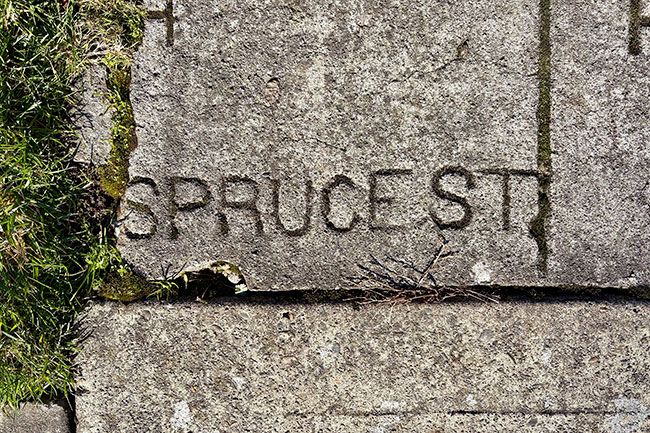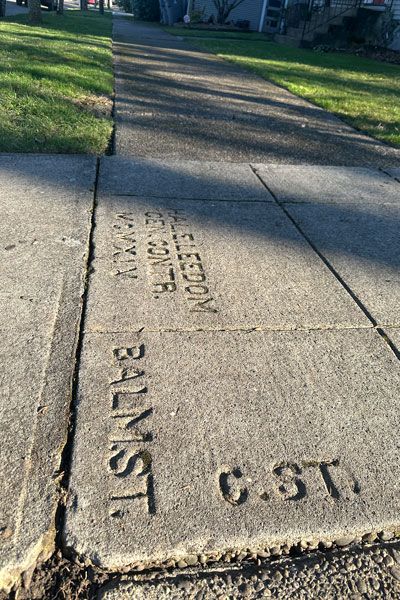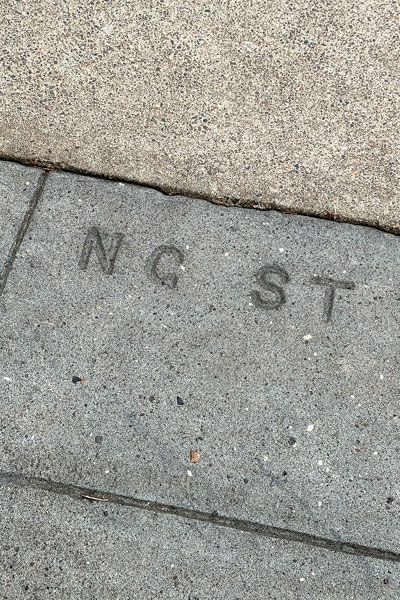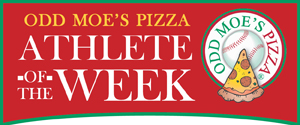Quirk of the Week: There is Balm in Gilead, and there was such a street in Mac



For good reason, McMinnville residents love their street trees. Then there are tree streets.
Where Quirk comes in is the proliferation of concrete sidewalk stamps marking past tree-named streets, and other imprint remnants from 100 to 120 years ago.
Gone, but not forgotten, are Ash, Spruce and Balm streets.
Many are doubtless familiar with existing streets named for trees: Pine, Filbert, Cypress and Sandalwood streets and Oak Way, mostly distributed in the western, later-developed parts of town. But there also used to be a Pine Street near downtown.
We are not forgetting Alder, Birch and Cedar streets, the latter-day alphabetical grid stretching four to 14 blocks north and south just west of Adams Street.
But there was a time when Alder, Birch, Cedar — along with Pine and other arboreal-named streets — were all in another part of town: the older section just north of the downtown core.
Their story is etched, literally, in our sidewalks.
In what follows, we are indebted to our archivist Michael Hafner and the late John White, for the Yamhill County Historical Society and Museum’s article “Residents Needed A Map in 1928 McMinnville,” published in 1998, the year before White died at age 71.
Almost 100 years ago, the street-name system in McMinnville was dramatically changed by city ordinance, starting with the numbered streets First through Fifth. They were then revised to run consecutively south to north instead of north to south, so this 1-5 pivot occurred: First became Fifth, Second became Fourth, Third remained the same, Fourth became Second, and Fifth became First. (Fifth, the former First, comes up in a moment.)
“William Newby laid out the town of McMinnville in 1856 with the original townsite plat showing only 10 streets defining a very few blocks in what is now the downtown area,” White wrote. “Over the years several tracts were annexed to accommodate population growth from almost none in 1856 to nearly 3,000 in 1928 and with new street designations apparently left to the whim of developers the city street grid had become quite confounding to even long time residents. Ordinance 1756 established a permanent comprehensive solution but, for some time after enactment, the confusion of more than 75 street name changes must have been great indeed.”
White noted that the sequence was then continued by converting already-named streets to numbered ones.
Until 1928, 12th Street was Ash; 11th used to be Balm and Linden; 10th used to be Spruce, Oak and East Oak; Ninth was formerly Cedar; Eighth was Pine; Seventh was Maple (and Saylor); and Sixth used to be Buckeye.
No doubt fans of Ohio State University would love to see some remnant of that last name.
And, no, the one on Galloway and Sixth streets reading “NC ST” is no booster for the Wolfpack school in North Carolina: that used to be North C Street.
We’ve found no trace of Buckeye on what is now Sixth. Much of that street, as it is close to downtown, has undergone sidewalk replacements over the years, with removal of the old concrete stamps. Spared was the old NC ST one, at a former street corner that now is just an odd wide spot in the sidewalk.
It is interesting that on some corners — see Balm and C streets, for example — evident care was taken to preserve the old markings.
But we did find others.
The concrete stamps are visible in many places, BLOCK LETTERS with the tree names and many cases of C ST. remaining on what had been Cowls. Some are accompanied by names of the builders or concrete contractors, and sometimes the date – usually just the year but rare examples show more detail. One stamp reads the precise date of 4-19-25.
At C and BALM streets (across from the tennis courts at what is now Cowls and 11th) you can see the stamp reading HAL.E.LEEDOM/GEN. CONTR/MCMXIV. (Making that sidewalk 110 years old last year. Around town are numerous examples of stamped dates from 1911 to 1920.) And the street is marked BALM.ST.
I found it intriguing that there used to be a Balm Street in McMinnville, but perhaps the name is not that unusual, for I found them in Liverpool, England, as well as Walla Walla and our own Sheridan, Oregon.
One of the better examples of tree-name sidewalk Quirk was found by Associate Editor Racheal Winter, who lives in the neighborhood; she espied a stamp on what is now 10th Street reading “SPRUCEST.”
So the letters in Spruce St.. and Balm. St. got scrunched, but over on Cedar St. the eight characters and a space are stretched over five feet of sidewalk.
The only concrete stamp I have been able to find from the old numbered-street system is “1 ST.” at Galloway and Fifth streets. It looks like the letter I, as in Identity, but it appears that a century ago the number 1 and letter I were used interchangeably. I suppose with no concrete stamps visible over on Irvine Street, we’ll never really know.












Comments